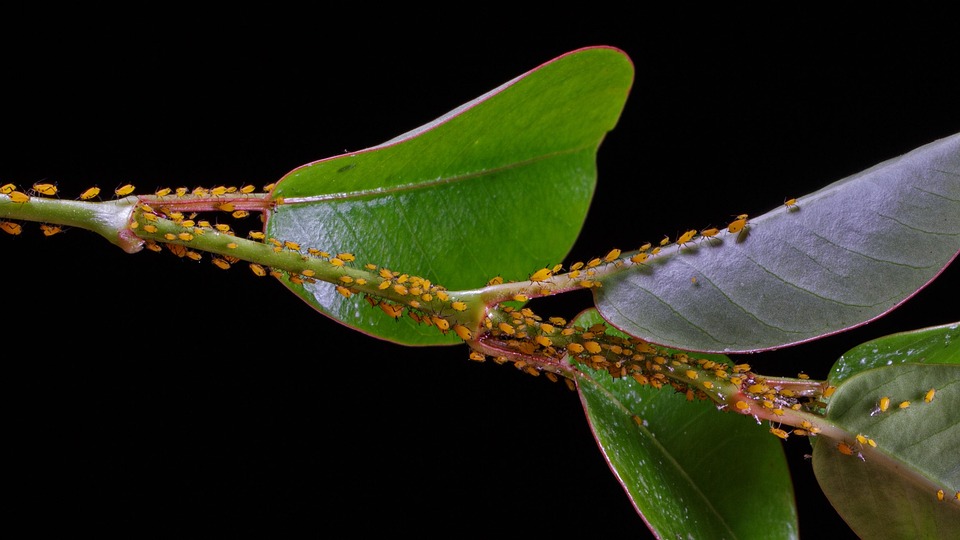Pest-Free Living: The Ultimate Guide to Infestation Solutions
Living in a pest-free environment is essential for maintaining a healthy and happy home. Dealing with infestations can be a frustrating and stressful experience, but with the right knowledge and tools, you can effectively prevent and manage pest problems. In this comprehensive guide, we will explore various infestation solutions to help you achieve a pest-free living space.
Identifying Common Pests
Before implementing any pest control measures, it is important to identify the type of pest you are dealing with. Common household pests include rodents, ants, cockroaches, spiders, and bed bugs. Each pest requires a different approach for effective control, so it is crucial to accurately identify the pest species.
Rodents
Rodents such as mice and rats can cause significant damage to your home and pose health risks through the spread of diseases. Signs of a rodent infestation include droppings, gnaw marks, and nests. To control rodents, seal entry points, set traps, and maintain cleanliness to eliminate food sources.
Ants
Ants are common nuisance pests that can invade your home in search of food. They are attracted to sugary and greasy substances, so be sure to clean up spills and store food properly. To control ants, use baits, sprays, and barriers to prevent them from entering your home.
Cockroaches
Cockroaches are resilient pests that can quickly multiply and spread throughout your home. They are attracted to dark, damp areas and can carry disease-causing bacteria. To control cockroaches, eliminate food and water sources, seal cracks and crevices, and use insecticides as needed.
Spiders
While most spiders are harmless, some species can be venomous and pose a threat to humans. Spiders are typically found in dark, secluded areas such as basements and attics. To control spiders, remove clutter, vacuum regularly, and use insecticides to deter them from entering your home.
Bed Bugs
Bed bugs are parasitic insects that feed on human blood while we sleep. They can be difficult to eliminate once they infest your home, so early detection is key. Signs of a bed bug infestation include bites on your skin, blood stains on sheets, and dark spots on mattresses. To control bed bugs, wash bedding in hot water, vacuum regularly, and consider professional extermination services.
Preventative Measures
Preventing pest infestations is the best way to maintain a pest-free living space. By following these preventative measures, you can reduce the risk of pests entering your home:
Seal Entry Points
Inspect your home for cracks, gaps, and holes that pests can use to enter. Seal these entry points with caulk or weatherstripping to prevent pests from gaining access.
Maintain Cleanliness
Keep your home clean and clutter-free to eliminate food and water sources for pests. Regularly vacuum, sweep, and mop floors, and clean up spills and crumbs promptly.
Store Food Properly
Store food in airtight containers to prevent pests from contaminating it. Keep pantry items such as grains and cereals sealed to deter insects and rodents.
Remove Standing Water
Pests such as mosquitoes and cockroaches are attracted to standing water. Check for leaks and fix any plumbing issues to eliminate sources of water that pests can use for breeding.
Natural Pest Control Methods
If you prefer to use natural methods for pest control, there are several options available that are safe and effective. Here are some natural pest control methods you can try:
Diatomaceous Earth
Diatomaceous earth is a natural substance that can be used to control a variety of pests, including ants, cockroaches, and bed bugs. Sprinkle diatomaceous earth in areas where pests are present, such as cracks and crevices, to dehydrate and kill them.
Essential Oils
Essential oils such as peppermint, lavender, and tea tree oil have insect-repellent properties that can deter pests from entering your home. Mix a few drops of essential oil with water and spray around entry points to create a barrier against pests.
Natural Repellents
There are several natural repellents that can be used to keep pests at bay. Planting herbs such as mint, basil, and rosemary around your home can deter insects, while using cedarwood chips or sachets can repel moths and other pests.
Professional Pest Control Services
If you are dealing with a severe pest infestation or are unable to control pests on your own, it may be necessary to seek professional pest control services. Pest control professionals have the knowledge, tools, and expertise to effectively eliminate pests from your home.
Inspection and Assessment
A pest control technician will conduct a thorough inspection of your home to identify the type of pest and the extent of the infestation. Based on their findings, they will develop a customized treatment plan to address the pest problem.
Treatment Options
Professional pest control services offer a range of treatment options to effectively eliminate pests from your home. These may include baits, traps, sprays, and fumigation techniques to target specific pest species.
Preventative Maintenance
After eliminating the pest infestation, pest control professionals can provide preventative maintenance services to help keep pests from returning. They may offer tips on how to prevent future infestations and schedule regular inspections to monitor for pests.
Conclusion
By following the tips and strategies outlined in this guide, you can achieve a pest-free living space and enjoy a healthier and more comfortable home. Whether you prefer natural pest control methods or professional pest control services, there are solutions available to help you effectively manage and prevent pest infestations. Remember to stay vigilant and proactive in your efforts to maintain a pest-free environment for you and your family.
Implementing these infestation solutions will help you achieve a pest-free living space and maintain a healthy and happy home. By following preventative measures, utilizing natural pest control methods, and seeking professional pest control services when needed, you can effectively manage and prevent pest infestations. Remember to stay proactive in your efforts and address pest problems promptly to ensure a pest-free environment for you and your family.





















































